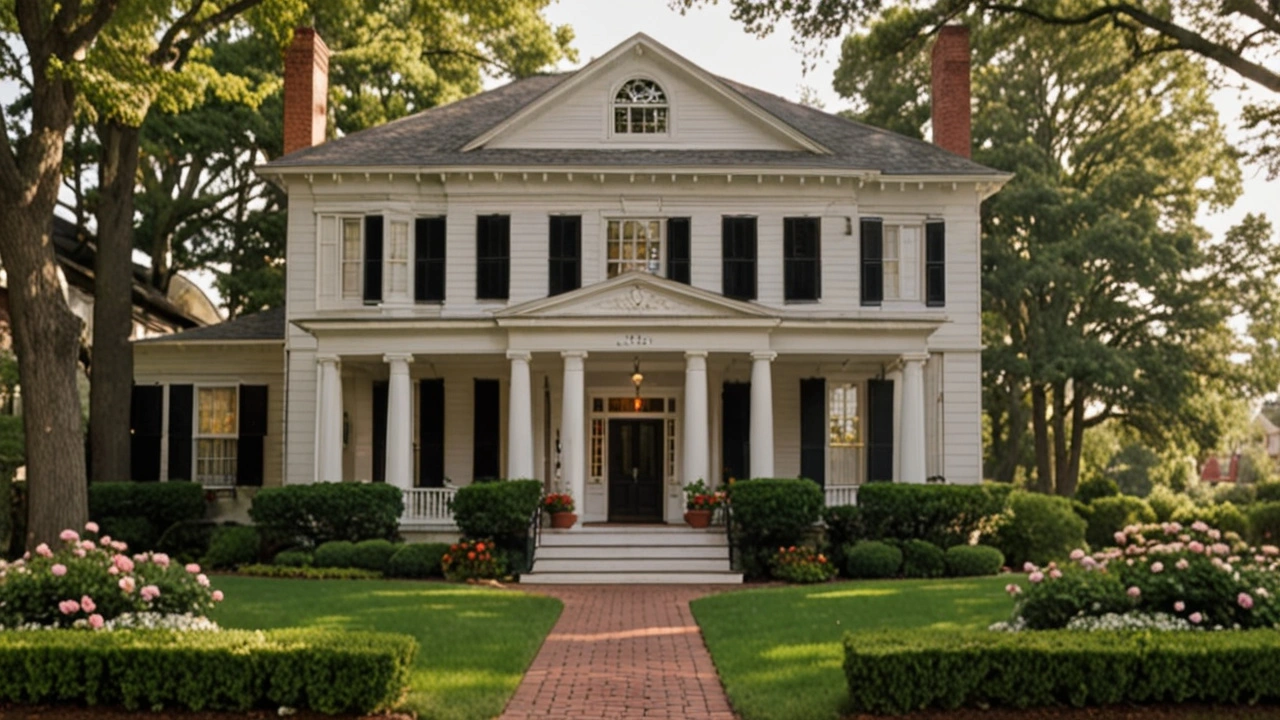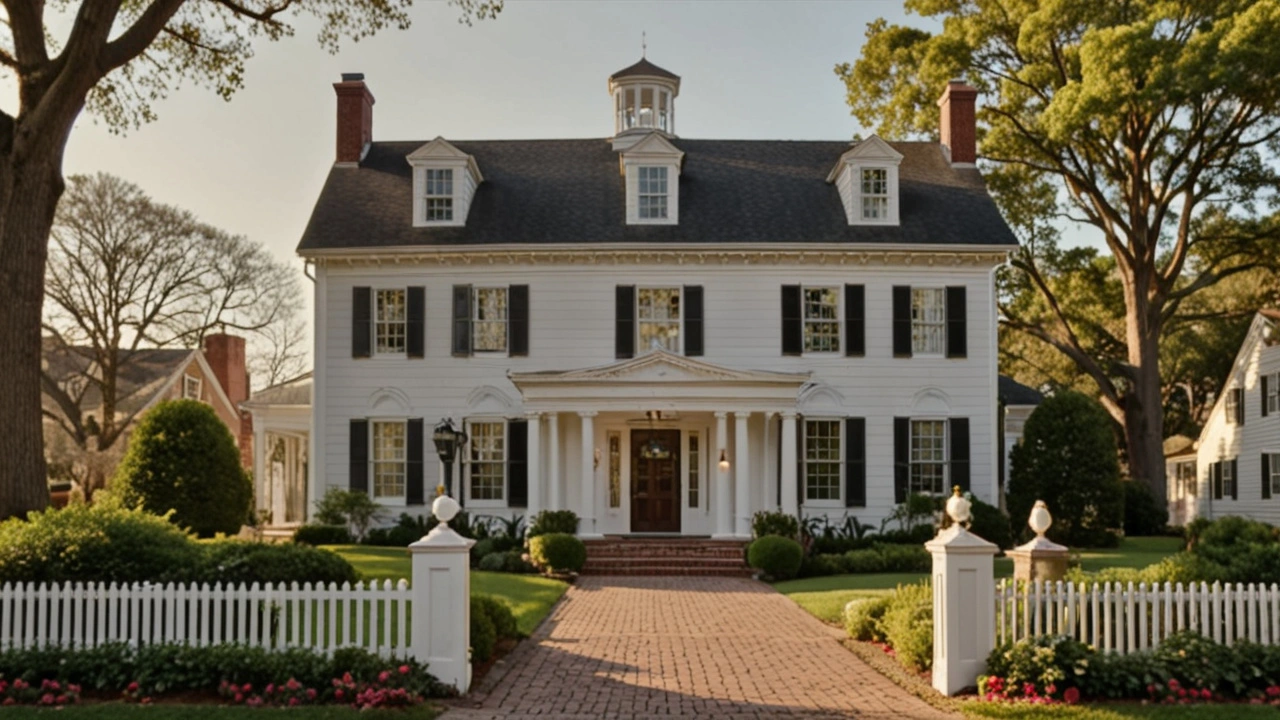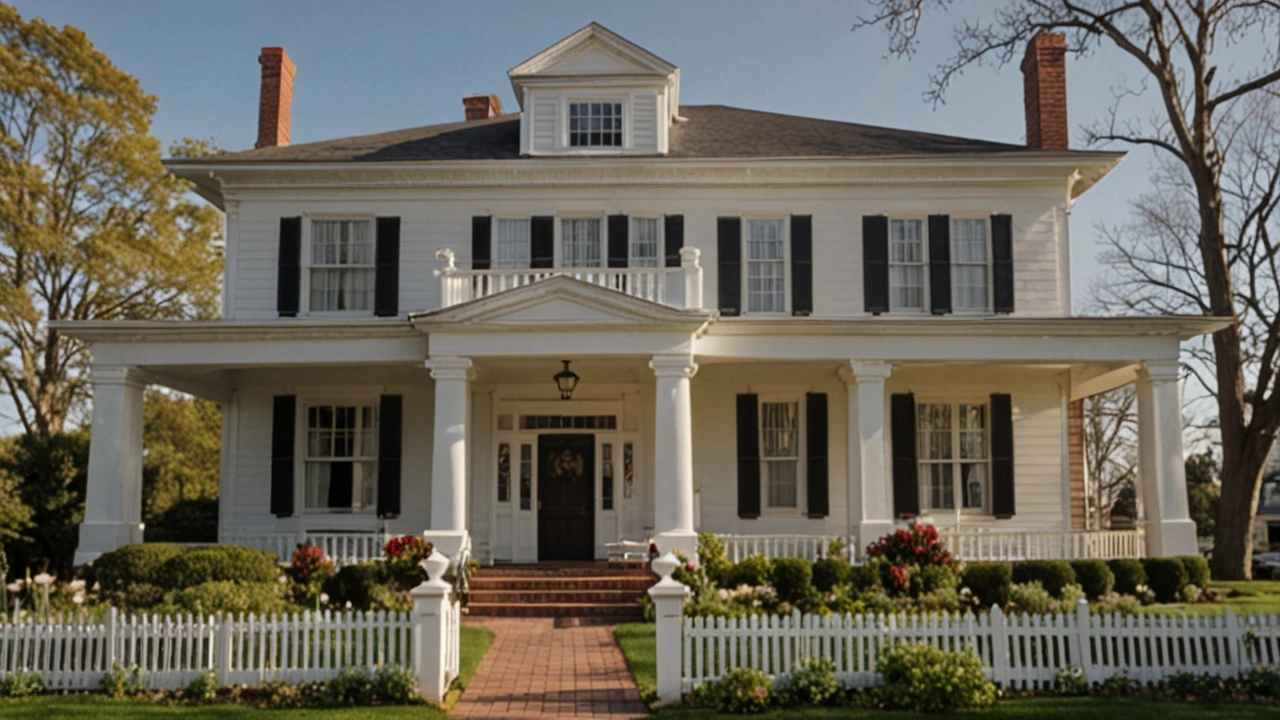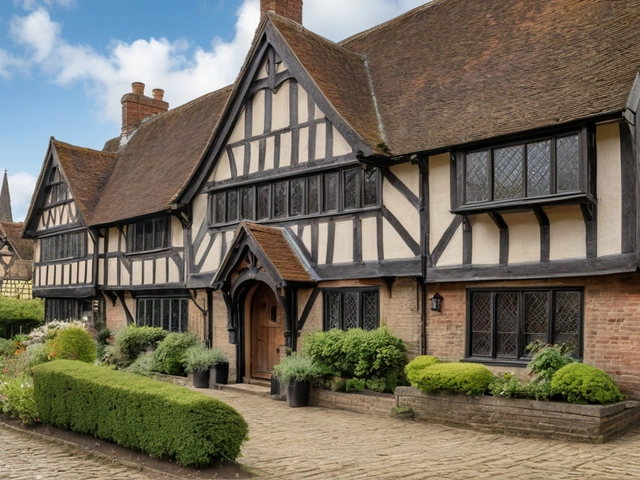Colonial Revival Architecture has long captured the imagination of homeowners and architects alike, becoming a cherished cornerstone of American architectural history. This style, which gained popularity in the late 19th and early 20th centuries, was a revival of the colonial architectural forms that were prevalent during the early days of the United States.
Known for its symmetrical design and classical elements, Colonial Revival homes often feature grand entryways, multi-pane windows, and simple yet elegant detailing. Whether you're a history buff or someone who appreciates timeless design, understanding the key features and modern applications of this style can be both inspiring and practical.
- Historical Origins and Influences
- Key Features of Colonial Revival Architecture
- Modern Applications and Adaptations
- Tips for Incorporating Colonial Revival Elements
Historical Origins and Influences
Colonial Revival Architecture emerged in the United States during a period of intense national pride and a longing for the perceived simplicity and nobility of the country's early years. This resurgence began around the 1880s and picked up significant momentum by the early 20th century, reaching its height by the 1920s. The roots of this architectural style can be traced back to the original American Colonial architecture, itself steeped in European, mainly British, influences.
The style took inspiration from a number of earlier American house forms, including Georgian, Adam, and Federal styles. One can often spot influences from these earlier periods in the form of symmetrical façades, classical columns, and dormer windows. A renewed interest in the nation's colonial past was sparked partly by the 1876 Centennial Exhibition in Philadelphia, which celebrated 100 years of American independence. As people strolled through the reconstructed colonial buildings, they were reminded of their heritage and the architectural beauty of the past.
Interestingly, the Colonial Revival wasn’t just confined to residential architecture. Public buildings, schools, and even some commercial buildings adopted the style, contributing to a widespread architectural movement. Architects such as McKim, Mead & White were pioneers in this revival, and their works further cemented Colonial Revival’s place in American architectural history.
The appeal of Colonial Revival wasn't just about aesthetics. It was also about a desire for stability and order in a rapidly changing society. The symmetry and simplicity of the style embodied a kind of reassuring familiarity during a time of urbanization and technological advancements. According to the National Park Service, “Colonial Revival homes offered a sense of comfort and nostalgia amidst a modernizing world.”
As the style evolved, it adapted to include more eclectic elements, blending in aspects from other periods and regions. Yet, it remained true to its core principles of symmetry and classical design. This adaptability ensured its popularity continued well into the mid-20th century and beyond. Even today, many new homes and restorations pay homage to this distinguished style, proving that while trends come and go, the charm of Colonial Revival endures.

Key Features of Colonial Revival Architecture
When it comes to Colonial Revival Architecture, there are several hallmark features that define this timeless style. One of the most noticeable characteristics is its emphasis on symmetry. The façade of a Colonial Revival home often features evenly spaced windows, a centered door, and balanced proportions, creating a sense of visual harmony that is both pleasing and elegant.
The front entryway is another prominent feature. Typically, the door is accentuated with classical elements such as columns or pilasters, and may be topped with a decorative crown, or pediment. Often, you'll find fanlights and sidelights surrounding the doorway, allowing natural light to flood into the entry hall. These elements not only enhance the home's aesthetic appeal but also highlight the influence of classical architecture.
Windows in Colonial Revival homes are usually multi-pane, double-hung sashes, with the most common configuration being six-over-six panes. These windows are often accented with shutters, which were originally functional but are now often purely decorative. This creates a cozy, inviting appearance that many find charming.
Rooflines in Colonial Revival architecture also play a significant role. Many homes feature a gabled roof, which can vary from a simple side-gable to more complex forms like cross-gables. The eaves are generally decorated with crown moldings or cornices, which add a touch of elegance to the overall design. Dormers are another common feature, especially in larger homes, providing additional space and light to the upper floors.
Material choice is another important aspect. Many Colonial Revival homes are constructed with brick, clapboard, or shingles. Brick houses often showcase the craftsmanship with intricate brickwork patterns, while wooden homes might feature beveled siding or wooden shingles. These materials not only provide a durable exterior but also echo the colonial era's authenticity.
The interiors of Colonial Revival homes often feature elements such as mantlepieces, wainscoting, and crown molding. Fireplaces are typically the focal point of the living room, adorned with detailed mantlepieces that often include intricate carvings. Wainscoting and molding add a layer of texture and depth to the walls, creating an environment that feels both warm and refined.
Colonial Revival Landscape
Landscaping also plays a role in accentuating the Colonial Revival style. Gardens are usually formal with a well-planned layout. Boxwood hedges, brick walkways, and circular driveways are common features that reflect the home's symmetrical and classic design. These outdoor elements work in harmony with the architectural features to create a cohesive aesthetic.
As architectural historian Richard Guy Wilson noted, “The Colonial Revival wasn't just about architecture; it was a movement that sought to shape a ‘correct’ national landscape.” This quote encapsulates how this style goes beyond mere design to influence broader cultural and historical narratives.
| Feature | Description |
|---|---|
| Symmetry | Balanced window and door placement |
| Front Entryway | Classical elements like columns and pediments |
| Windows | Multi-pane, double-hung sashes |
| Rooflines | Gabled roofs, often with dormers |
| Materials | Brick, clapboard, shingles |
Understanding the key features of Colonial Revival architecture enables homeowners and architects to appreciate its rich history and timeless appeal. By blending elements of classical design with modern needs, this architectural style proves to be not only a nod to the past but also a viable option for modern living.

Modern Applications and Adaptations
Colonial Revival Architecture, with its timeless appeal and classical roots, has found new life in contemporary home design. While staying true to its traditional elements, architects and homeowners have creatively adapted this style to meet the demands of modern living. One of the most notable modern applications is the blending of open floor plans with the formal, symmetrical layout typical of Colonial Revival homes. This fusion allows for a sense of spaciousness and improved flow, which are highly coveted features in today’s homes.
Another modern twist on Colonial Revival involves incorporating eco-friendly elements. Homeowners often choose sustainable materials such as reclaimed wood for flooring and energy-efficient windows that mimic the classic multi-pane style. This approach not only honors the aesthetic of Colonial Revival but also promotes responsible living practices. Additionally, modern kitchens within Colonial Revival homes often maintain the classic charm with Shaker-style cabinets and farmhouse sinks, while integrating state-of-the-art appliances and smart home technology for convenience.
Outdoor spaces in modern Colonial Revival homes also see thoughtful adaptations. The traditional front porch, a hallmark of Colonial architecture, is often expanded to include outdoor living areas like patios and gardens. These extensions invite homeowners to enjoy their surroundings and foster a connection with nature. Landscaping that embraces native plants and water-efficient designs further aligns these homes with contemporary environmental values.
A fine example of the successful blend of modernity and tradition is the renovation of older Colonial Revival homes. Many homeowners and designers are dedicated to preserving the historical integrity of these homes while updating them for modern functionality. This careful balance can be seen in the restoration of woodwork and the addition of modern amenities such as updated HVAC systems and enhanced insulation. This not only improves the home’s energy efficiency but also ensures comfort and practicality without compromising the original charm.
The adaptability of Colonial Revival goes beyond residential applications. Commercial buildings and public institutions have also embraced this style, incorporating its stately columns and symmetrical façades in their designs. These adaptations create welcoming spaces that offer both aesthetic appeal and functionality. Historic schools and government buildings are prime examples of this trend, standing as testaments to the enduring versatility of Colonial Revival architecture.
An observation worth noting comes from the National Trust for Historic Preservation, which states,
“The enduring popularity of Colonial Revival architecture lies in its ability to be both timeless and adaptable. This versatility allows it to meet the evolving needs of society while preserving a connection to the past.”This sentiment captures why Colonial Revival remains a beloved choice for many, seamlessly bridging the gap between historical elegance and modern innovation.

Tips for Incorporating Colonial Revival Elements
Integrating Colonial Revival elements into your home doesn't just mean making things look old-fashioned. It involves a blend of historical charm with modern functionality. One of the first steps in this process is to understand the essence of Colonial Revival style. Typically, Colonial Revival homes boast symmetrical façades and balanced proportions, adorned with classical elements like columns and pediments. To truly capture this style, attention to detail is crucial.
Start with the exterior. Front doors in Colonial Revival designs are often accentuated with decorative pediments and supported by pilasters. Adding a brass knocker or a classic lantern can enhance the historical feel. Windows play an equally important role. Traditional multi-pane, double-hung sash windows are a staple. You might also consider incorporating shutters painted in contrasting but complimentary colors for an authentic touch.
The roof design can also significantly impact the overall look. Many Colonial Revival homes feature a steeply pitched roof, sometimes with dormer windows that add both aesthetic charm and extra space. When choosing materials, wood and brick are prevalent in Colonial Revival exteriors. Natural wood shingles or brickwork can add a layer of authenticity that's hard to replicate with modern materials.
Inside the home, the key is to marry formality with comfort. Traditional wood paneling and wainscoting can add a sense of historical depth to living spaces. You might opt for a muted, but rich, color palette — think shades of ivory, blue, and grey. For flooring, hardwood is often preferred, perhaps finished with a period-appropriate rug. Fireplaces, with substantial mantels and intricate moldings, can serve as stunning focal points in living rooms and dining areas.
Lighting fixtures are another area where you can imbue your home with Colonial charm. Consider installing chandeliers or sconces that replicate the look of 18th-century candle holders. Pewter and brass materials are often preferable for these fixtures due to their historical accuracy.
For furniture, aim for pieces that exude simplicity and sophistication. Chairs and tables made of sturdy wood, such as mahogany or cherry, often fit the bill. Upholstered furniture with classic lines can help maintain the room's elegance without overdoing it. Adding historical or reproduction accents, like framed antique maps or period-correct ceramics, can also contribute to an authentic atmosphere.
If you're into DIY projects, creating a Colonial Revival garden can be a delightful extension of your home. Emphasize symmetry with pathways and use native plants to mimic the gardens of early American settlers. Boxwood hedges and perennial flower beds are excellent choices.
According to architect Hugh Howard, "The essence of the Colonial Revival style lies in its ability to adapt beautifully to contemporary living while preserving a timeless sense of American heritage."
Lastly, don't forget to pay attention to the smaller details. Switch plate covers, door handles, and even hinges can be crafted to reflect Colonial Revival motifs. Although these might seem like minor elements, they can collectively make a significant impact on the overall cohesive feel of your home.





